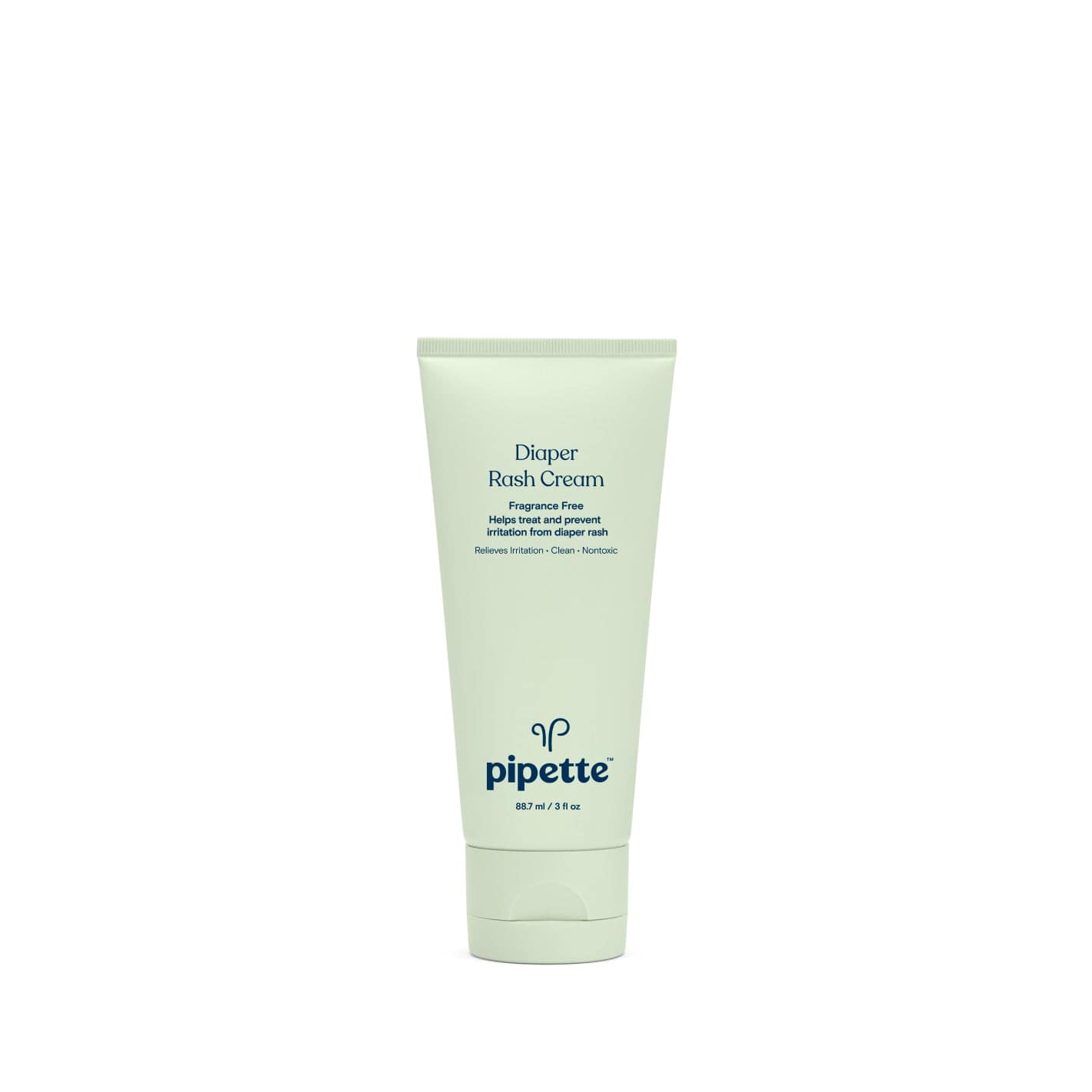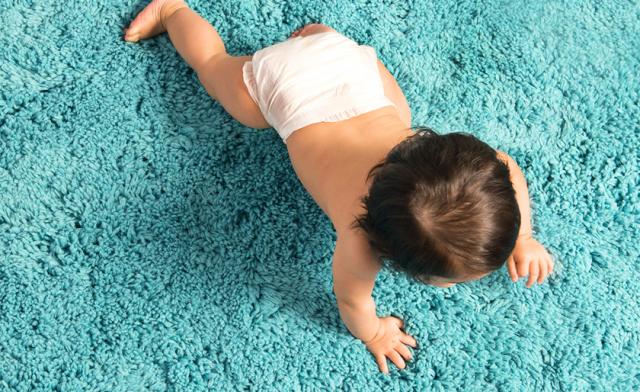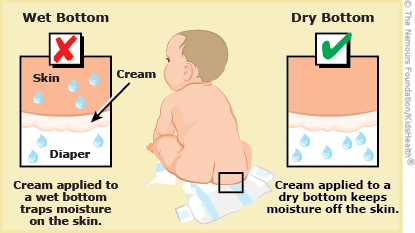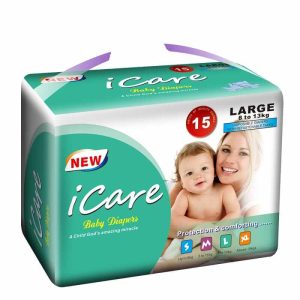To stop baby diaper rash, keep the area clean and dry. Use a barrier cream to protect the skin.
Baby diaper rash can be distressing for both infants and parents. This common issue often arises due to prolonged exposure to wet or soiled diapers, leading to irritated and inflamed skin. Ensuring the diaper area stays dry and clean is crucial for prevention.
Barrier creams, such as those containing zinc oxide, create a protective layer on the skin, shielding it from moisture and irritants. Frequent diaper changes and allowing the baby’s skin to air-dry can also significantly reduce the risk of rash. Choosing breathable, well-fitting diapers helps minimize friction and skin irritation. With these simple steps, you can keep your baby’s delicate skin rash-free and comfortable.

Credit: www.pipettebaby.com
Causes Of Diaper Rash
Understanding the causes of diaper rash can help parents prevent this common issue. Diaper rash can make babies uncomfortable and fussy. Identifying the triggers is crucial for keeping your baby happy and healthy.
Common Triggers
Several common triggers can cause diaper rash in babies. Knowing these can help in prevention and treatment.
- Wet diapers: Wetness can irritate a baby’s skin.
- Infrequent diaper changes: Less frequent changes mean more irritation.
- Chafing: Diapers rubbing against the skin can cause redness.
- New products: Some babies react to wipes, diapers, or creams.
Environmental Factors
Various environmental factors also contribute to diaper rash. Keeping an eye on these can help reduce the risk.
| Factor | Description |
|---|---|
| Heat | Warm environments can make babies sweat, leading to rashes. |
| Humidity | High humidity can keep the diaper area damp. |
| Allergens | Dust or other allergens can irritate a baby’s skin. |
Symptoms To Watch
Diaper rash can make your baby uncomfortable. Recognizing the symptoms early helps in quick treatment. Pay attention to visible signs and behavioral changes in your baby.
Visible Signs
Look for these visible signs to identify diaper rash:
- Red patches: Bright red skin, especially in the diaper area.
- Swelling: Puffy, swollen areas on the skin.
- Blisters: Small, raised bumps or blisters.
- Peeling skin: The skin may peel or flake.
- Dryness: Extremely dry and rough patches.
Behavioral Changes
Watch for these changes in your baby’s behavior:
- Increased crying: More crying, especially during diaper changes.
- Fussiness: Overall increased fussiness and irritability.
- Difficulty sleeping: Trouble falling or staying asleep.
- Less activity: Reduced movement or playfulness.
- Frequent touching: Baby may touch or scratch the diaper area.
Preventive Measures
Preventing baby diaper rash ensures your baby stays comfortable and happy. Simple steps can make a big difference. Follow these preventive measures to keep your baby’s skin rash-free and healthy.
Frequent Changes
Changing your baby’s diaper frequently is crucial. Wet or soiled diapers cause irritation and rashes. Aim for diaper changes every two to three hours. Do not wait until the diaper is completely soaked.
Keep an eye on your baby’s diaper, especially after feedings. Babies often wet their diapers during or after meals. Nighttime changes are also important. Even if your baby sleeps through the night, a quick check can prevent rashes.
Proper Cleaning
Proper cleaning is essential to prevent diaper rash. Each time you change a diaper, clean the area thoroughly. Use soft, fragrance-free wipes or a damp cloth. Avoid rubbing the skin harshly.
For extra protection, rinse the diaper area with warm water. Pat the skin dry with a soft towel. Ensure the skin is completely dry before putting on a new diaper. Moisture can lead to rashes.
Use a diaper rash cream as a protective barrier. Apply it during each diaper change. Look for creams with zinc oxide or petroleum jelly. These ingredients help soothe and protect the skin.

Credit: www.facebook.com
Choosing The Right Diapers
Choosing the right diapers can help prevent baby diaper rash. The right diaper ensures your baby stays dry and comfortable. Let’s explore the key factors: Material, Fit, and Comfort.
Material Matters
The material of the diaper is crucial. Natural fibers like cotton are gentle on the skin. Avoid synthetic materials that can cause irritation. Look for hypoallergenic options. These reduce the risk of rashes.
Avoid diapers with fragrances or dyes. These can irritate sensitive skin. Breathable materials allow air to flow, keeping the skin dry. This helps prevent rashes from developing.
Fit And Comfort
A good diaper fit prevents leaks and keeps your baby comfortable. Too tight diapers can cause chafing and irritation. Too loose diapers may lead to leaks and skin irritation.
Consider the shape and size of the diaper. Elastic waistbands and leg cuffs ensure a snug fit. Adjust the diaper tabs for a secure fit. Check for red marks. Red marks indicate the diaper is too tight.
| Feature | Benefit |
|---|---|
| Elastic Waistbands | Provides a snug, flexible fit |
| Leg Cuffs | Prevents leaks and chafing |
| Adjustable Tabs | Ensures a secure and comfortable fit |
Ensuring the right fit and material can help keep your baby rash-free. Choose wisely for your baby’s health.
Effective Home Remedies
Diaper rash can make your baby uncomfortable. Luckily, there are many effective home remedies to help soothe and heal diaper rash quickly. Using natural solutions and topical applications can provide relief for your baby’s sensitive skin.
Natural Solutions
Natural solutions are gentle and safe for your baby. They are also easy to find and use.
- Breast Milk: Apply breast milk to the affected area. It has healing properties.
- Aloe Vera: Use aloe vera gel on the rash. It soothes and heals the skin.
- Coconut Oil: Coconut oil fights bacteria and keeps the skin moisturized. Apply a small amount on the rash.
- Baking Soda Bath: Add two tablespoons of baking soda to your baby’s bath. It helps to neutralize acids and soothe the skin.
Topical Applications
Topical applications can provide quick relief and promote healing. Here are some effective options:
| Application | Benefit |
|---|---|
| Zinc Oxide Cream | Creates a barrier to protect the skin. |
| Petroleum Jelly | Locks in moisture and prevents irritation. |
| Calendula Cream | Reduces inflammation and promotes healing. |
| Hydrocortisone Cream (1%) | Reduces severe inflammation and redness. |
Remember to always clean the diaper area gently. Use a soft cloth and avoid harsh wipes. Let your baby’s skin air dry whenever possible. Applying these remedies consistently can help prevent and treat diaper rash effectively.
Medical Treatments
Baby diaper rash can be painful for your little one. If home remedies don’t work, medical treatments might be necessary. This section covers over-the-counter options and when to see a doctor for diaper rash.
Over-the-counter Options
Several over-the-counter treatments are available to ease diaper rash. Here are some common choices:
- Barrier Creams: Apply zinc oxide or petroleum jelly to protect the skin.
- Anti-fungal Creams: Use if the rash is caused by yeast.
- Hydrocortisone Cream: Use sparingly for severe inflammation.
Always read labels and follow instructions. Some products are not suitable for young infants.
When To See A Doctor
If the diaper rash doesn’t improve with over-the-counter treatments, consult a doctor. Here are signs to watch for:
- Severe Rash: If the rash is very red or swollen.
- Blisters or Pus: If you see blisters or pus-filled bumps.
- Fever: If your baby has a fever along with the rash.
Doctors may prescribe stronger medications if needed. Always follow their advice for the best care.
Daily Care Routine
Maintaining a consistent daily care routine can significantly reduce the risk of baby diaper rash. Simple and regular practices can keep your baby’s skin healthy and rash-free. Below are essential steps for an effective daily care routine.
Bathing Tips
- Use lukewarm water for bathing your baby.
- Avoid using harsh soaps and opt for mild, fragrance-free cleansers.
- Limit bath time to 5-10 minutes to prevent skin drying.
- Gently pat the skin dry with a soft towel.
Skin Protection
Keeping your baby’s skin protected is key to preventing diaper rash.
- Apply a thin layer of barrier cream or ointment during each diaper change.
- Choose breathable, hypoallergenic diapers to reduce skin irritation.
- Change diapers frequently to keep the area clean and dry.
- Allow your baby some diaper-free time each day.
Use the following tips to ensure extra care:
- Use a soft cloth or cotton balls for gentle cleaning.
- Ensure the diaper area is completely dry before putting on a new diaper.
- Regularly check for any signs of rash or irritation.
| Tip | Benefit |
|---|---|
| Use fragrance-free products | Reduces risk of allergic reactions |
| Avoid tight-fitting diapers | Allows better air circulation |
By following these steps, you can keep your baby’s skin healthy and comfortable every day.

Credit: www.desitin.com
Myths And Misconceptions
Many parents hear various myths and misconceptions about baby diaper rash. It’s important to separate fact from fiction. This will help you keep your baby’s skin healthy and rash-free.
Common Beliefs
Many people believe certain things about diaper rash. Let’s explore these common beliefs.
- Diaper rash only happens with dirty diapers.
- Only certain brands cause diaper rash.
- Baby powder always prevents diaper rash.
Fact Vs. Fiction
| Myth | Fact |
|---|---|
| Diaper rash only happens with dirty diapers. | Even clean diapers can cause rash from moisture and friction. |
| Only certain brands cause diaper rash. | Any diaper can cause a rash if not changed often. |
| Baby powder always prevents diaper rash. | Baby powder can sometimes make the rash worse. |
Frequently Asked Questions
What Causes Baby Diaper Rash?
Diaper rash can be caused by moisture, friction, and irritants. Wet or soiled diapers create a breeding ground for bacteria. Tight diapers also cause friction.
How Can I Prevent Diaper Rash?
Change diapers frequently to keep the area dry. Use a barrier cream and ensure a snug but not tight fit. Let the baby go diaper-free sometimes.
What Home Remedies Help Diaper Rash?
Air drying, applying coconut oil, and using unscented wipes can help. Oatmeal baths also soothe irritated skin. Always consult a pediatrician for severe cases.
When Should I See A Doctor For Diaper Rash?
See a doctor if the rash persists for more than a few days, or if it looks severe. Also, consult if there are signs of infection like blisters or pus.
Conclusion
Preventing baby diaper rash is achievable with the right care. Keep the diaper area clean and dry. Use gentle products and give your baby diaper-free time. Always consult your pediatrician for persistent issues. By following these tips, you can ensure your baby stays comfortable and rash-free.




